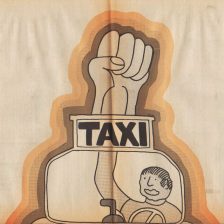It’s the morning after 700 marchers from Occupy Wall Street were arrested as they marched across the Brooklyn Bridge.
It’s a beautiful fall day in New York. The Liberty Plaza occupiers remain securely in place—with a substantial, but not overwhelming, police presence on their margins. The couple of hundred occupiers are engaged in a variety of activities—some sleeping after what was another wet night; some working in the communications hub; a good number diligently sweeping the ground and more than a few answering the questions of visitors and media representatives. They were overwhelmingly young and white.
A print newspaper, The Occupied Wall Street Journal, has now been put together by Aron Gupta and Jed Brandt and published on October 1st. For an account of the origins of the paper, go to http://culturalorganizing.org/?p=2221.
One piece of valuable information in the paper is a brief account of the origins of the Occupy Wall Street protest:
Adbusters made the initial call in mid-July, and also produced a sexy poster with a ballerina posed atop the Charging Bull statue and riot police in the background. US Day of Rage, the mainly internet-based creation of IT strategist Alexa O’Brien, got involved too and did a lot of the early legwork and tweeting. Anonymous—in its various and multi-form visages—joined in late August. In New York most of the planning was done by people involved in the NYC General Assembly, a collection of activists, artists and students first convened by folks who had been involved in New Yorkers Against Budget Cuts. But no one person or group is running the Wall Street occupation.
[There’s another, more convoluted and somewhat inconsistent, account of the origins at http://ampedstatus.org.]
I spoke to a young man from Dover, Delaware who had driven up to New York yesterday and had been one of those arrested on the bridge. I asked him if he thought the cops had planned to allow people to start walking on the roadway and then arrest them. He said that he thought it had all been planned. Once they had let the number of marchers start across who they thought they were prepared to arrest, they closed down the Manhattan side of the bridge. I asked why some on the roadway were arrested and others not. He said that they mostly arrested young people (in their 20s and 30s) and let older people and those with children go. In any case, he spent the night with about fifty others in a police holding pen in upper Manhattan. Four people were placed in cells designed for one; they were not told what they were being charged with and were not given anything to eat or drink. Finally, they were allowed to buy bottles of water. They were released on Sunday morning. Most were charged with disorderly conduct but some, those who had been at the front of the march and had locked their arms together, were charged with resisting arrest. He wasn’t sure if everyone had been released. I asked if most of those arrested had returned to the occupation site. He smiled and said, “I’m here.”
To place this brief report in context, I should mention that the streets of downtown Manhattan were very crowded for a Sunday morning. In fact, there were thousands of people walking on Broadway—apparently all but unaware of what was going on a few blocks away. It turned out that they too were walking across the Brooklyn Bridge—for a cure for diabetes. The walkers included many children and adults of all ages. They also included a fair number of black folks.
Just beyond the Brooklyn side of the bridge, there was a throng of people, mostly black and dressed for church, entering the Brooklyn Tabernacle on Jay Street. I’ve passed the church before and had never seen so many people. It turns out they were attending the Ninth Annual Music Conference. On the web, the Tabernacle promised many exciting performers but noted:
In the end, we know that only God, through His Spirit, can bring the refreshing and strengthening that we all need to accomplish His purpose for our lives.
All of this was going on in downtown Manhattan and downtown Brooklyn on a beautiful Sunday morning in October. But the people on the bridge and entering the Tabernacle weren’t reading The Occupied Wall Street Journal and probably didn’t know much about the arrests on the bridge the day before. We need to understand the occupiers, the walkers and the worshippers and say some things that speak to all of them.
John



Leave a Reply